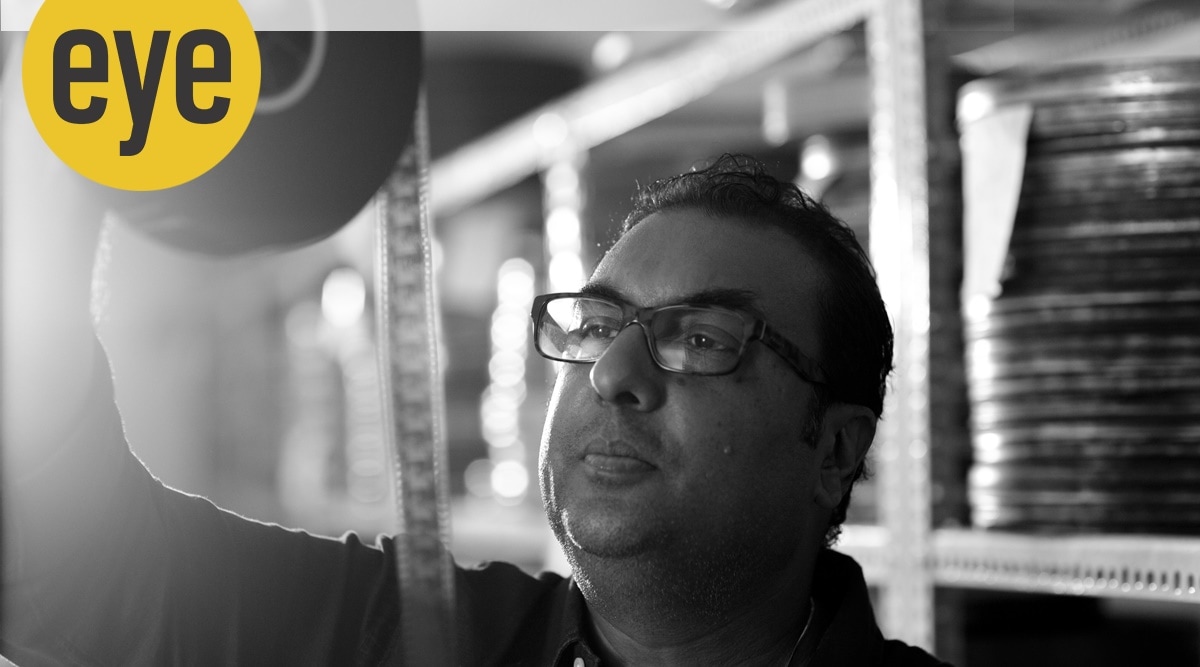 Shivendra Singh Dungarpur has curated the film festival that showcases the best of Bachchan’s early films that launched him as a superstar (Courtesy: Shivendra Singh Dungarpur)
Shivendra Singh Dungarpur has curated the film festival that showcases the best of Bachchan’s early films that launched him as a superstar (Courtesy: Shivendra Singh Dungarpur)To paraphrase François Truffaut, it was a lovely time of life, when one cared more about those we admired than oneself. That’s how I felt about growing up. It was an obsession. I have broken bounds in boarding school to watch his films, been thrown out of class for writing notes in my Bachchan diary that had details of every film that I had watched from Bansi Birju (1972) to Don (1978) to Mr. Natwarlal (1979), stood outside his Juhu home as a college student waiting for that momentary glimpse and that small wave from my idol. This obsession made me decide to become a filmmaker right from my school days. The first time I met him was as a young student at a Film and Television Institute of India (FTII) workshop and I was overwhelmed. I would never have imagined then that years later I would have the opportunity to direct him in several commercials and films for the Film Heritage Foundation and more importantly to work with him so closely on saving India’s film heritage.
When I established the Film Heritage Foundation in 2014 in response to the colossal loss of our film heritage, I knew I needed a champion — Amitabh BachchanNo other actor has that towering persona and who even half a century since his debut continues to be as relevant to contemporary audiences, and who represents the past, the present and the future. Even as he turns 80, he is on Kaun Banega Crorepati (KBC), night after night, engaging with such ease with people. He continues to be one of the busiest actors and yet he finds time to tweet and blog and to respond to hundreds of requests every day.
The best discovery of all, though, was that he was a fellow archivist. In a scenario, where the original camera negatives of hundreds of classics have vanished and even prints are sometimes hard to come by, Bachchan has been archiving prints of several of his films on 35 mm for decades. Where big producers, studios and labs had discarded our celluloid heritage, he had the foresight to preserve his films. He has been advocating for the preservation and restoration of India’s film heritage.
His birthday seemed a perfect occasion not just to celebrate an icon, but also to demonstrate that his films, like the superstar himself, are ageless. We want to change the perception that classic cinema should be confined to retrospectives. An actor of his stature should have a showcase at a grand scale. Ajay Bijli of PVR Cinemas has given us an amazing platform to show these films over four days in 25 cinemas across 19 cities, making it the biggest festival that the country has ever seen.
There’s a “Bachchan Back to the Beginning” exhibition at PVR Juhu to coincide with the screenings curated by film historian and author SMM Ausaja. It will display rare photographs and artworks.
It’s been a mammoth task persuading producers and copyright holders, finding the best material of these films, and converting them into a format that can be shown in cinemas. The “Bachchan Back to the Beginning” festival presents 11 iconic films, which bring back the phenomenon of the angry young man, the poet, the comic, the man next door, the many avatars of an extraordinary actor. These include films such as Deewaar (1975), Kabhie Kabhie (1976), Amar Akbar Anthony (1977) and Abhimaan (1973).
Watching the films the other day, I had tears in my eyes as all the memories and emotions of growing up with Amitabh Bachchan came rushing back — the thrill of watching a Bachchan first day first show, buying tickets in black, feeling 10-ft tall, laughing, crying, singing and dancing along with him in a darkened cinema hall… I felt like it was yesterday. And I knew that this is exactly how people would feel and would want to relive those times and come back to the cinema to watch him larger than life on the big screen, the way these films were meant to be seen.
The response has been overwhelming. People from all over the country have been calling and writing to ask for tickets, including many contemporary filmmakers and actors. We have had international enquiries asking if we could take the festival overseas. For many of them, it is a first time, despite the fact that these films are available on YouTube and other streaming platforms. The sweetest thing I have heard is that the cast of Satte Pe Satta (1982) have planned a reunion to go to the cinema to watch the film together.
As Bachchan said, “This festival showcases not just my work, but the work of my directors, fellow actors and technicians of the time. It brings back an era that is gone, but not forgotten. This is why saving India’s film heritage is so important. I hope that this is just the beginning of many festivals that will celebrate landmark films of Indian cinema back on the big screen.”
Shivendra Singh Dungarpur is a filmmaker and the founder director of Film Heritage Foundation